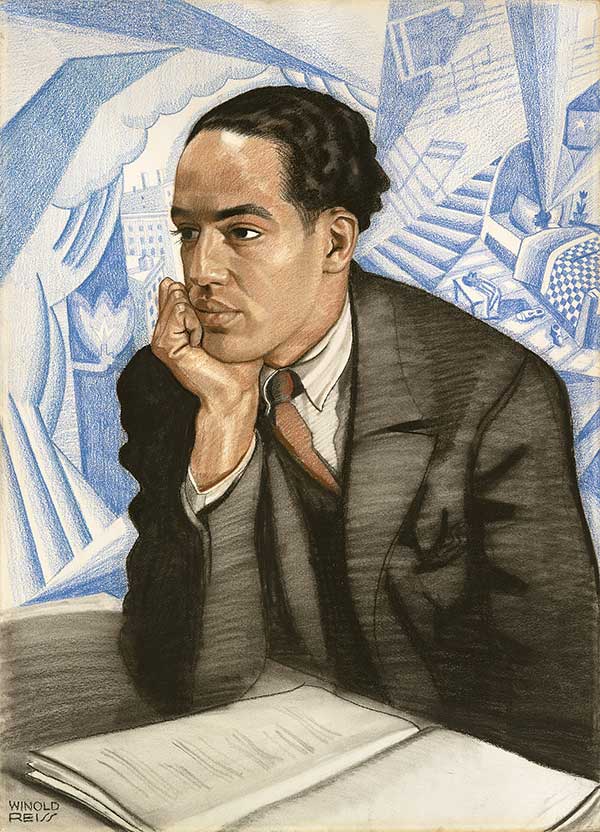 |
| Winold Reiss (1886–1953) , Portrait of Langston Hughes,(1902–1967) / Pastel on illustration board, ca. 1925 / 30 1/16 x 21 5/8 in. (76.3 x 54.9 cm) / National Portrait Gallery, Smithsonian Institution; gift of W. Tjark Reiss |
Art History is a way of seeing. A good bit of what we practice is learning to look: observing, noticing, making connections, considering choices, paying attention to how what you learn from your own and others' observations of one work teach you to observe another work with more nuance and possibility.
Since yesterday was the day that we celebrate one of America's most important dreamers, I thought we might think about Langston Hughes' reflection on dreams as an angle into his painting.
Harlem
What happens to a dream deferred?
Does it dry up
like a raisin in the sun?
Or fester like a sore—
And then run?
Does it stink like rotten meat?
Or crust and sugar over—
like a syrupy sweet?
Maybe it just sags
like a heavy load.
Or does it explode?
-Langston Hughes
With the Reiss portrait of Langston Hughes above, let's do a quick round of practicing Looking
- What do you you see? space? objects? shapes?
- what do you notice about color?
- what do you notice about movement?
- what do you notice about foreground and back?
- what does the painting tell you about Harlem, early 1920's? what does the poem tell you about Harlem, 1951?
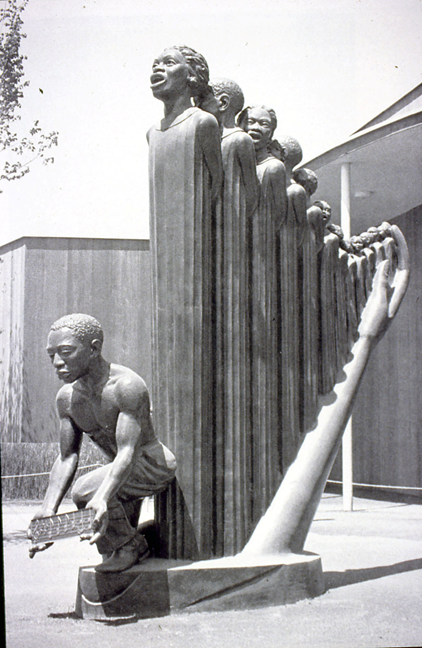 |
| Augusta Savage, Lift Every Voice and Sing, Bronze, 16', 1939. |
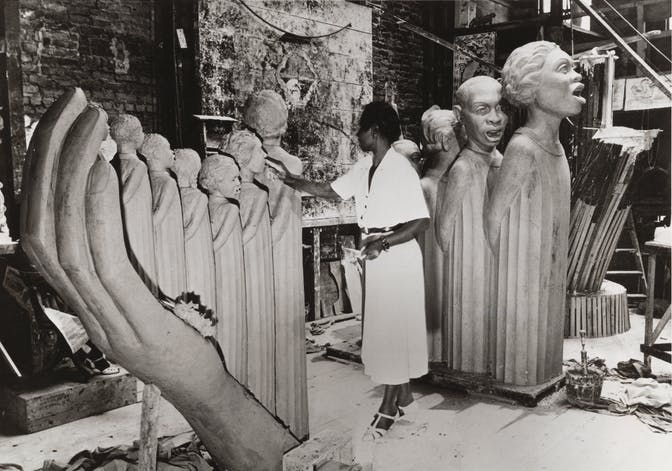
Homework: familiarize yourself with the syllabus. Read the short pieces on the two links on the syllabus. Bring in two community agreements
to propose to the group. Bring in something you find beautiful. Beautiful?
to propose to the group. Bring in something you find beautiful. Beautiful?
To introduce me, in a few of my facets:
In my work as an artist, I tend to focus on:
storytelling, animals, childhood, play, nonsense, and meaning.



In my work as a historian and writer, I tend to focus on:
storytelling, animals, childhood, play, nonsense, and meaning.
my work as a professor, I tend to focus on, you guessed it:
storytelling, (animals-not always literally), childhood (because I believe that children and artists have many of the same ways of working), play, nonsense, and meaning.
storytelling, animals, childhood, play, nonsense, and meaning.



In my work as a historian and writer, I tend to focus on:
storytelling, animals, childhood, play, nonsense, and meaning.
my work as a professor, I tend to focus on, you guessed it:
storytelling, (animals-not always literally), childhood (because I believe that children and artists have many of the same ways of working), play, nonsense, and meaning.
| Edward Lear: one of many nonsense self-portraits. We will work together to develop abilities in seeing, understanding, imagining, describing, reading, and talking about art and writing. |
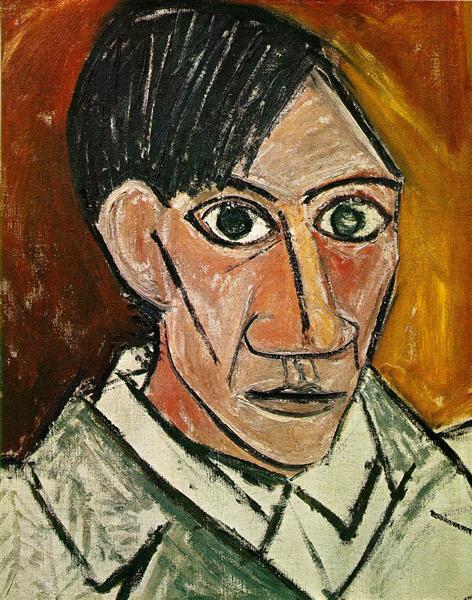 |
| Picasso, Self Portrait, 1907 |
 | ||
| picasso, 1896 |
 |
| Lynda Barry, ~2010 |
| and a bunch by Edward Lear, mid to late 1800's |
 |
| Add caption |
Now, introduce you. Please include your name, school, year. Draw your self-portrait. Besides having to take WAVA, why is a writing class where we practice bringing art to life with words important to you as an artist in your field. Or not important.
Art History Map



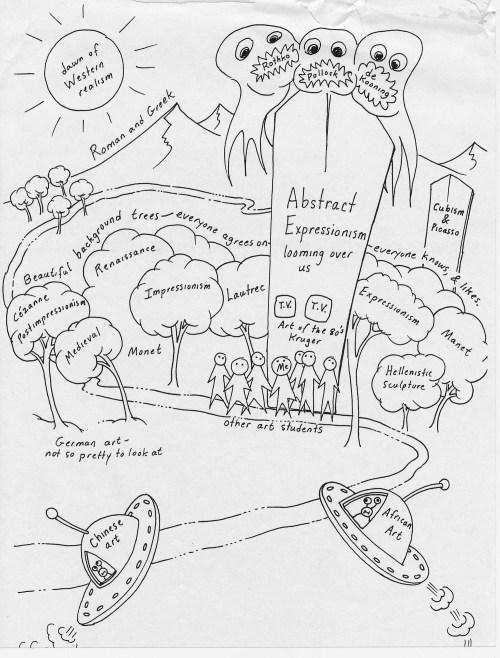


John Ogilby's, Road from London to the Lands End 1675 (Wikimedia).



John Ogilby's, Road from London to the Lands End 1675 (Wikimedia).
What does your map of art history look like?
Some reflections on Teaching
–––––––––––––––––––––––––––––––––––––––––––––––––––––––––––
A friend and
colleague told me once that teachers often fail to state what they believe is
obvious, and that this hinders the success of the class. So, you may find some
of the materials on the rest of this page obvious, but I didn’t want to miss
the obvious
I teach because I love having conversations about art and
ideas. I look forward to meeting a new group of people each year, and I love
learning settings. I teach because I like and respect my students, and enjoy
hearing new ideas. Please share your ideas, opinions, insights, and
observations freely, and listen to, reflect upon, and respond openly to those
of others.
I believe learn is a verb…. Please
come to class ready to think, ask questions, build bridges, make knowledge. So:
·
Please Talk. Ask questions. If you are curious,
ask a question. If you don’t understand something, ask a question. If you hear
a word you don’t know, ask a question. If you would like more info, ask a
question. Asking questions provides the fastest way to get information.
· Please take good
notes… I believe in marginalia, in drawing your own connections between what
happens in class and what you are thinking about and working on in your own
time, taking a few moments to write down an idea that something in class
triggered, making the material your own. Always have notebook and pencil in
class, even if your computer is handy.
·
Listen
actively and practice the art of conversation. Sharing ideas comprises the
course’s most fundamental activity.
·
By talking
and listening, we open ourselves to the course and to others, making ourselves
vulnerable—to each other and to learning.
·
Learning takes
hold through play, experimentation and reflection. Be willing to play with the
materials, to take risks, and take time to mull over the ideas in your own
ways.
·
Find places
where your own passion, wisdom, and knowledge overlaps with the subjects of the
course, and bring those resources to share generously each time we meet.
Remember: The learner learns what the learner wants to learn, but you can shape
the materials of the course to move toward what you want to
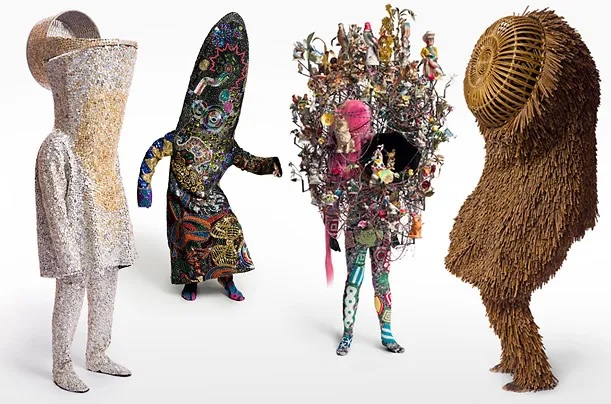
No comments:
Post a Comment